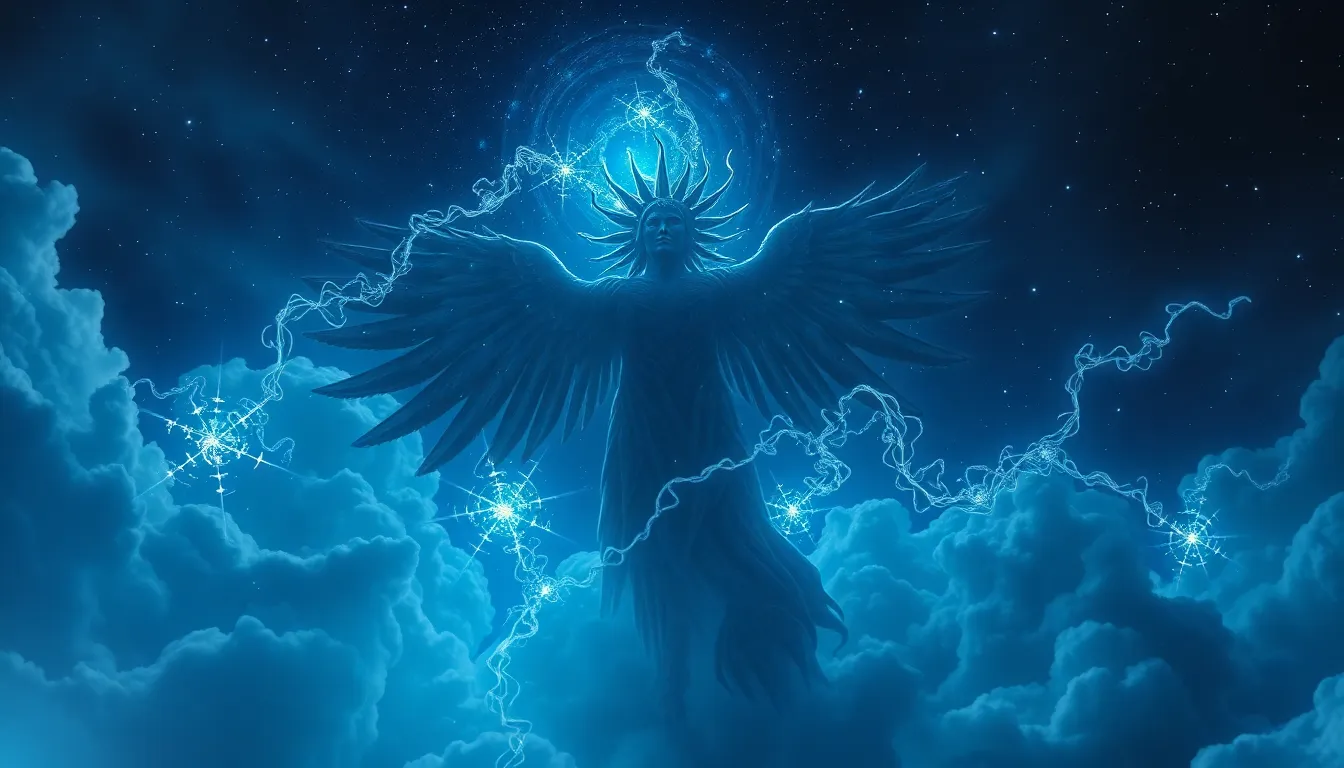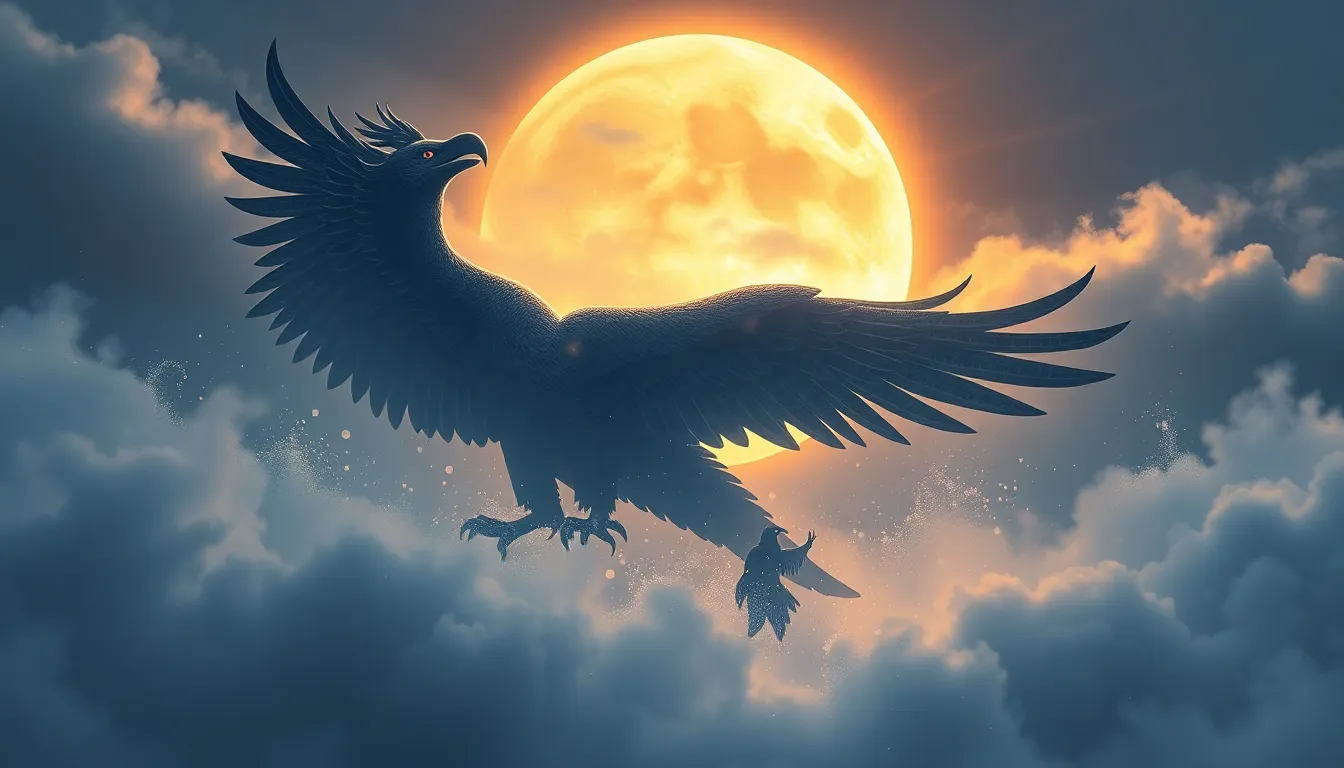The Spirit of the Sky: Native American Myths of Celestial Beings
I. Introduction
Native American mythology is a rich tapestry of stories that reflect the diverse cultures and beliefs of Indigenous peoples across North America. Central to many of these narratives are celestial beings, whose significance extends beyond mere storytelling to encompass spiritual, cultural, and practical dimensions of life. This article explores the importance of celestial beings in Native American myths, highlighting their roles in creation stories, daily rituals, and artistic expressions. By examining these beliefs, we can gain a deeper understanding of Native American identity and heritage.
II. The Role of Celestial Beings in Native American Culture
The sky is often seen as a sacred realm in Native American cultures, where celestial beings reside and interact with the earthly world. This connection between the sky and spirituality is manifested in various ways:
- Spiritual Connection: Celestial bodies symbolize the link between humans and the divine, serving as intermediaries in spiritual practices.
- Symbolism of Natural Elements: Stars, moons, and the sun are imbued with meaning, representing guidance, femininity, and life-giving energy.
- Influence on Daily Life: Celestial events dictate agricultural practices, hunting seasons, and rituals, emphasizing the interdependence of nature and culture.
III. Major Celestial Figures in Native American Myths
Several celestial figures stand out in Native American mythology, each embodying unique attributes and stories:
A. The Sun: Life-giver and protector
The Sun is often revered as a life-giving force, providing warmth and energy essential for survival. Many tribes view the Sun as a protector, guiding their journeys and ensuring bountiful harvests.
B. The Moon: Guardian of dreams and femininity
The Moon holds a special place in many Native cultures, often associated with femininity, intuition, and dreams. It is seen as a guardian of the night and a symbol of cyclical change.
C. The Stars: Guides for navigation and storytelling
Stars are not merely distant lights; they serve as navigational tools and storytellers. Many tribes use constellations to convey moral lessons or historical events, weaving human experiences into the fabric of the cosmos.
IV. Creation Myths and the Sky
Creation myths provide insight into how various tribes interpret the cosmos and their origins:
A. Different interpretations of the cosmos’ creation
While narratives vary, many share common themes of celestial beings playing crucial roles in the creation of the earth and its inhabitants.
B. The role of celestial beings in creation stories
In many myths, celestial beings like the Sun or Moon actively participate in shaping the world, often engaging in conflict or cooperation with other spiritual entities.
C. Comparisons among various tribes’ myths
Despite regional differences, themes of harmony with nature and the significance of celestial bodies are prevalent across tribes, reflecting a shared reverence for the sky.
V. Legends of Celestial Beings and Their Stories
Numerous legends feature celestial beings, each contributing to cultural identity:
A. Notable myths featuring celestial beings
Stories such as the Hopi’s creation of the world by the Sun Spirit or the Lakota’s Moon Woman illustrate the profound impact of celestial figures.
B. The significance of these stories in cultural identity
These myths are not just tales; they reinforce community values, traditions, and the connection to the land and cosmos.
C. Lessons and morals derived from the myths
Many stories impart essential life lessons, emphasizing respect for nature, the importance of harmony, and the interconnectedness of all beings.
VI. The Influence of Celestial Beings on Art and Symbolism
Celestial beings have profoundly influenced Native American art and symbolism:
A. Representation of celestial beings in Native American art
Art often depicts celestial figures, using vibrant colors and intricate designs to convey their power and significance.
B. Use of symbols and motifs in crafts and textiles
Symbols of the Sun, Moon, and stars are commonly found in pottery, weaving, and beadwork, each telling a story or representing a belief.
C. Contemporary interpretations and adaptations
Modern artists continue to draw inspiration from these celestial myths, blending traditional techniques with contemporary themes, thereby keeping the stories alive.
VII. Preservation of Myths and Modern Relevance
The preservation of these myths is vital for cultural continuity:
A. Oral traditions and the importance of storytelling
Oral storytelling remains a cornerstone of Native American culture, allowing for the transmission of knowledge and traditions across generations.
B. Efforts to preserve and revitalize these myths today
Many tribes are actively working to revitalize their languages and stories, ensuring that the wisdom of their ancestors continues to be shared.
C. The relevance of celestial beings in modern Native American identity
In contemporary society, celestial beings still hold significance, serving as symbols of resilience and connection to heritage.
VIII. Conclusion
The celestial beings of Native American myths are not merely characters in ancient stories; they embody the spiritual essence of the cultures that revere them. As we reflect on their importance, we recognize the enduring legacy of these narratives and their role in shaping Native American identity. It is crucial to appreciate and respect this rich cultural heritage, as it offers invaluable insights into the human experience and our relationship with the cosmos.




